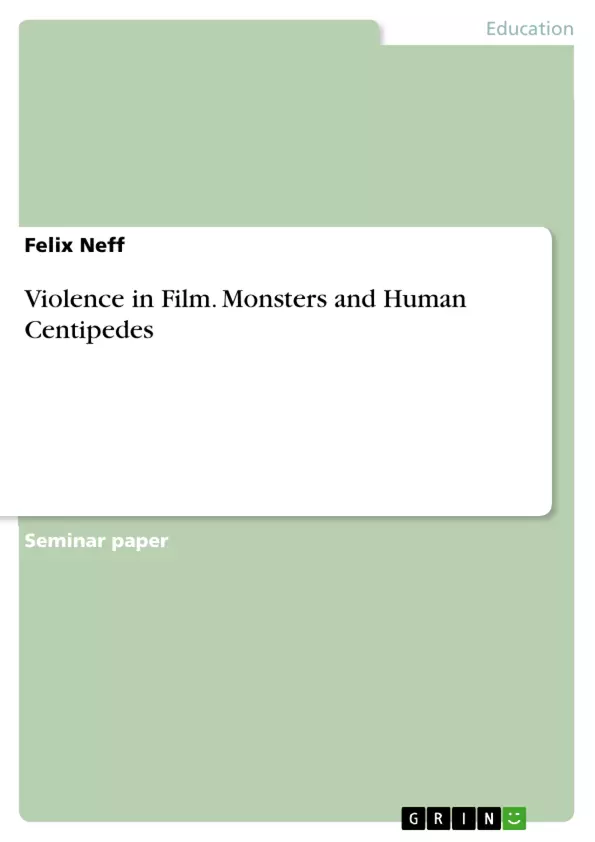Over the past decades it is easy to see a development of what is deemed acceptable in movies and what is not - films that were perceived as outrageous in the past are G–rated today; limits that were thought to be uncrossable are broken again and again in contemporary productions. By examining the past, present and potential future of controversy caused by violence in film, especially in the United States of America, the United Kingdom and central Europe, it is clear to see that the overall trend is going towards increasing liberalisation and acceptance of violent content in mainstream cinema.
The trend of movies becoming increasingly violent is very likely to continue in the future.
Inhaltsverzeichnis (Table of Contents)
- Thesis
- Bases
- Film
- Controversial issues in film
- Violence in film
- Eliminating Frankenstein's monster
- "Freaks" ahead of their time
- "Peeping Tom" raises the bar
- Reflecting Vietnam in "The Last House on the Left"
- A "Chain Saw Massacre" becomes a landmark
- Slasher-Boom in the 1980s
- "Natural Born Killers" wreak havoc
- "New French Extremity" and "Torture Porn"
- Summary and prognosis for the future of violence in film
Zielsetzung und Themenschwerpunkte (Objectives and Key Themes)
This term paper examines the evolution of violence in film, specifically focusing on how the limits of what is considered acceptable on screen have shifted over time. It analyzes how films that were once considered outrageous are now seen as relatively tame, highlighting the increasing normalization of violent content in mainstream cinema. The paper explores this trend in the contexts of the United States, the United Kingdom, and central Europe, and examines the factors contributing to this shift.- The changing perception of violence in film over time
- The normalization of violent content in mainstream cinema
- The impact of social and historical contexts on the reception of violent films
- The influence of censorship and rating systems on the evolution of violence in film
- The future of violence in film and the potential for further desensitization
Zusammenfassung der Kapitel (Chapter Summaries)
The first chapter presents the thesis of the paper, arguing that the overall trend in film is towards increasing liberalization and acceptance of violent content. It introduces the concept of changing perceptions of violence in film over time and sets the stage for the subsequent analysis.
The second chapter provides a foundational understanding of the film industry, beginning with its origins in the late 19th century and tracing its growth and development. It discusses the increasing influence of movies on society and the subsequent calls for censorship and control over content.
The third chapter delves into the history of violence in film, examining specific examples of films that pushed the boundaries of what was considered acceptable at the time. It highlights the influence of social and historical contexts, such as the Vietnam War and the rise of the slasher genre, on the evolution of violence in film. This chapter focuses on the following films: "Frankenstein," "Freaks," "Peeping Tom," "The Last House on the Left," "Texas Chainsaw Massacre," and "Natural Born Killers." It also examines the emergence of the "New French Extremity" and "Torture Porn" subgenres.
Schlüsselwörter (Keywords)
This term paper explores key themes related to the history and future of violence in film, including the impact of censorship, social and historical contexts, and the changing perception of violence in mainstream cinema. It examines specific films as examples of evolving cinematic norms and the increasing normalization of violent content. Key concepts include censorship, rating systems, social impact of film, and the cultural and historical context of violence in film.- Quote paper
- Felix Neff (Author), 2012, Violence in Film. Monsters and Human Centipedes, Munich, GRIN Verlag, https://www.hausarbeiten.de/document/214348


